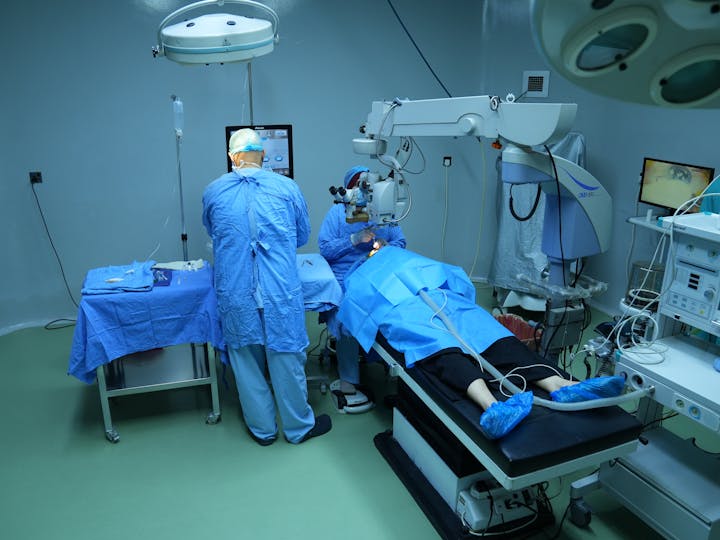Key Takeaways
- LASIK is a widely performed vision correction surgery with consistently high satisfaction rates among patients worldwide.
- Candidacy hinges on several strict health, age, and vision requirements, meaning not every patient will be eligible.
- Understanding LASIK’s real risks, expected lifestyle changes, and limits can help patients make well-informed decisions.
- Technological progress in LASIK continues to expand safety and success for new and returning candidates.
- Selecting the right surgeon and completing thorough preoperative screenings are critical steps in the LASIK process.
Understanding LASIK Eye Surgery
LASIK, which stands for Laser-Assisted in Situ Keratomileusis, has transformed how people approach vision health and personal independence. The procedure involves using a highly accurate laser to reshape the cornea, correcting how light is focused on the retina and reducing or eliminating issues like nearsightedness, farsightedness, or astigmatism. This means millions worldwide no longer rely daily on glasses or contact lenses for most activities. The interest in laser eye surgery has soared, prompting increased awareness and improved access. Anyone considering LASIK often becomes curious about reputable practices such as Tersigni Vision to help guide them through the process and ensure a clear, personalized evaluation of their needs.
Most appointments and the surgery are quick compared to many other elective procedures, frequently taking less than thirty minutes start to finish. As soon as the next day, most people report dramatically improved vision, making the short recovery time one of the strongest advantages. Worldwide, LASIK has become one of the most studied and refined elective operations, and according to the American Academy of Ophthalmology, it ranks among the most effective. The profound improvement in daily activities—from driving to enjoying the outdoors—cannot be overstated.
Eligibility Requirements for LASIK Candidates
Not everyone’s eyes are alike, so strict eligibility standards exist for LASIK. Ideal candidates are generally at least 18 years old and have a stable vision prescription for at least one year, meaning their eyes are no longer changing rapidly. Corneal thickness and stability are crucial, as the procedure relies on a healthy, robust cornea to safely reshape the eye’s front surface. Pre-existing issues, such as severe dry eyes or certain immune disorders, can make the outcome less predictable or unsafe, so a thorough medical screening is part of every LASIK process. Consulting with an experienced Portland LASIK surgeon can help determine whether you’re a good candidate based on your unique eye health and vision goals.
It’s not just about age or stability, though. Corneal mapping and measurements of eye moisture are taken before surgery to rule out anything that might jeopardize healing or results. Refractive alternatives or lifestyle adaptations may offer similar benefits.
Potential Risks and Side Effects
No surgery is completely without risk, even one as well-studied as LASIK. The most commonly encountered issues include mild dry eye, glare, halos, or trouble seeing well at night in the weeks following surgery. As highlighted by the U.S. Food & Drug Administration, over 95% of people describe these symptoms as mild and temporary. However, long-lasting dryness or, rarely, infection can occur. Less than one percent of procedures result in significant, long-term adverse effects such as corneal flap complications.
Understanding these odds is crucial—most side effects clear up with simple aftercare and often resolve as the eye heals. Transparent surgeon-patient communication and adherence to all aftercare instructions further reduce the risk of unwanted results.
The Importance of Preoperative Assessment
A detailed preoperative assessment is the foundation of successful LASIK. Before any procedure, the eye care team conducts various measurements, from corneal thickness and curvature to the overall health of the ocular surface. Digital mapping techniques can uncover even subtle irregularities that may have gone unnoticed with standard eye exams. Assessing tear production and eye dryness further guides whether LASIK is advisable immediately or better postponed.
Reviewing all prior eye surgeries, medications, and medical history is essential. This process ensures eligibility, sets realistic post-surgery expectations, and personalizes the procedure for optimal vision improvement. Solid preparation leads to the best results and avoids disappointment from unanticipated surprises.
Realistic Expectations and Outcomes
Statistics from major reviews report that more than 95% of patients are satisfied with their LASIK results. While many enjoy years—or even decades—of sharp vision, some may require a “touch-up” enhancement if their eyes change over time. There’s also a natural decrease in near vision (presbyopia) for those in their 40s or beyond, even after LASIK, which can result in reading glasses regardless of original success.
Discussing the predicted outcome for your unique eyes, prescription, and age during consultation helps smooth the path to satisfaction and avoid regret. Candid expectations are among the most important cornerstones of medical satisfaction, especially with elective surgeries like LASIK.
Tips for Choosing an Eye Surgeon
- Choose board-certified ophthalmologists specifically trained in refractive surgeries like LASIK, ensuring robust safety practices and technical skill.
- Ask about the volume of LASIK cases performed and their complication rates. Surgeons with extensive experience tend to yield the most consistent and predictable results.
- Request patient testimonials or references, which can offer insight into bedside manner, clarity of communication, and ongoing care.
- Ensure the clinic emphasizes comprehensive aftercare and support, which significantly improves the recovery process and outcomes.
- Don’t hesitate to seek a second opinion if you want reassurance or feel unsure about your doctor’s recommendations.
Transparent relationships and personal agency are crucial for doctors making decisions about ocular surgery. A well-qualified, attentive professional greatly impacts the LASIK journey from start to finish.
Lifestyle Considerations Post-LASIK
Life after LASIK often opens new doors to recreational and professional opportunities. However, gentle aftercare is necessary in the first few weeks to protect your results. Surgeons recommend taking a short break from swimming, hot tubs, and vigorous sports to give the skin time to heal. Protective sunglasses help prevent UV light irritation while also preserving corneal health. Most people can return to work or driving within 24 to 48 hours, though every recovery is unique.
Those accustomed to reaching for corrective lenses daily often report a newfound freedom and confidence in sports, travel, or even just rolling out of bed to a clear world.
Recent Advancements in LASIK Technology
Continued innovation ensures that today’s LASIK is safer and more effective. Introducing femtosecond lasers for flap cr today allows a less invasive, highly personalized experience, and wavefront-guided mapping creates detailed, individualized blueprints for laser application. These technological steps have made LASIK available to a broader range of prescriptions and corneal shapes, all while reducing side effects and improving visual outcomes, including sharper night vision.
For anyone interested in current trends, real-life stories, and the future of laser eye surgery, The New York Times offers a recent overview of how the landscape changes and what patients can expect today and tomorrow.





